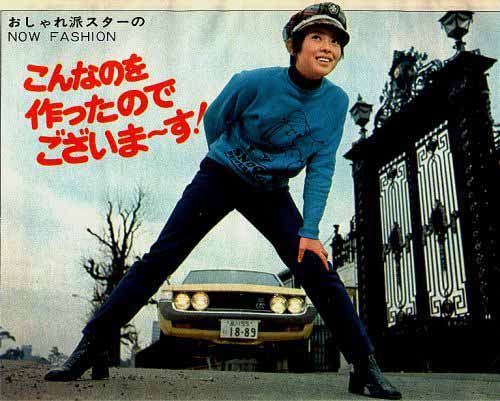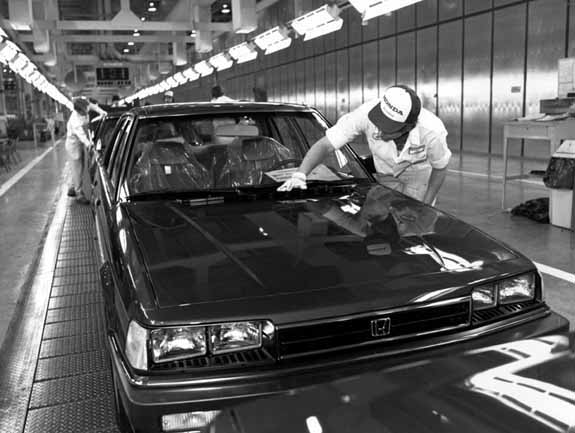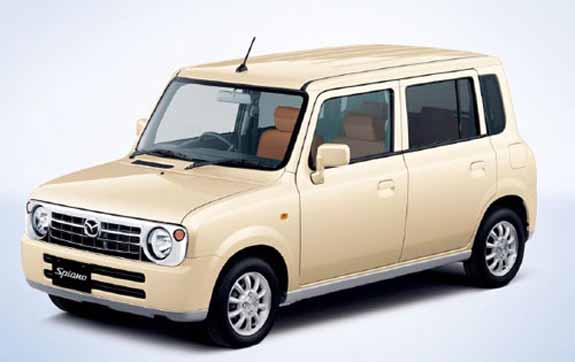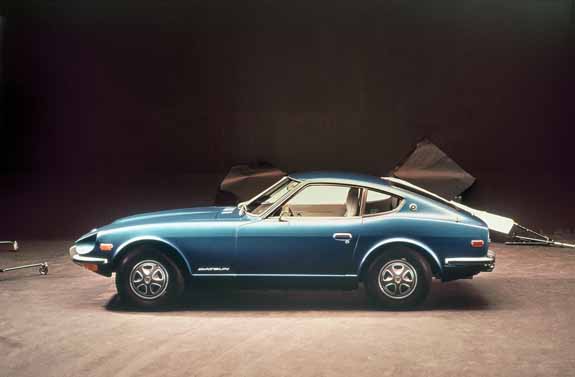" This appealing little runabout from Toyota was the product of 'The National Car Concept' that was created in 1955 by the very powerful Japanese Ministry of International Trade and Industry. The idea was to nudge Japanese captains of industry into focussing "

Japanissimo!

Japan’s final victory in its long campaign to dominate the global car industry only came last year. General Motors had been the world’s biggest carmaker for 75 years, and last year celebrated its centenary. Toyota’s birthday gift to the General was to steal his long-held, long-cherished number-one slot. Japan overtook Germany as the world’s biggest car exporter back in ’74, and the US as the world’s biggest carmaker in 1980, but it took until 2008 for a Japanese carmaker to become the biggest in the world.
And when it finally came, it was a very Japanese victory. There was no corporate crowing. Toyota’s bosses wouldn’t discuss it; not even a press release was issued. Maybe they’d foreseen the cataclysmic sales slump that has since hit every major carmaker, Toyota included, and decided that making a big noise about numbers would be a bad idea.
But the slump won’t threaten Toyota’s number one position. And what do you notice about those two other red-letter dates in Japan’s automotive history? Each follows a major global economic crisis, namely the oil panics of ’73 and ’79. In each case Japan’s car industry was hit hard. But in each case, as the world’s economy rebounded, chastened car buyers wanted more of the small, reliable, economical and affordable cars the Japanese build so brilliantly. You can count on the same thing happening again.

So where did it all go right for Japan? As a global car superpower, it was a very late starter. In the 1920s and ‘30s, as the US and European carmakers were bringing motoring to the masses and building fabulous Bugattis and Duesenbergs, the Japanese government classed anything with four wheels and an engine as a munition, and controlled what was built. So the first Japanese car firms – Mitsubishi, Isuzu, Mazda and Toyota – mostly built grim military trucks.
But the government also passed an act which made it almost impossible for foreign carmakers to continue to operate in Japan. Ford and GM established themselves in Europe before the war and still dominate. They also controlled virtually all of Japan’s car production until the mid-‘30s, and might still do if they hadn’t been booted out.
The Americans might have lost another opportunity to stifle Japan’s nascent car industry during the war, when a massive bombing mission on Toyota’s main factory was called off after the A-bombs were dropped and Japan capitulated. Not that Toyota and its rivals then had it easy; in the bleak post-war years they were reduced to making pots and pans to keep their factories open.
But the Americans helped out again, twice. First, while still controlling Japan they banned car production. So the Japanese concentrated on building cheap, efficient motorbikes, which found an instant, vast and desperate global market. By 1960, Japan was the biggest bike maker in the world, and firms like Honda and Suzuki got their start. Then the Korean War brought US money flowing into Japan, creating demand for military trucks, reopening the car factories and supercharging the Japanese economy.

But the real inflection point came in 1955. The Japanese government again stepped in, but this time with a positive suggestion. It proposed a ‘people’s car’; something small, light and cheap that cash-strapped post-war car buyers could reasonably aspire to, with tax breaks to encourage firms to build them and buyers to buy them. It was the birth of the ‘kei-car’: the tiny, distinctive city transport still popular in Japan today. But more importantly it brilliantly foresaw the kind of car the world would want in two decades’ time, and it wasn’t the gross-out, gas-guzzling, wings’n’fins monstrosities that Detroit was producing.
Japan’s small-car expertise is the single most important reason for its success. But the Japanese also pushed hard to export them or – better – make them overseas, and built them with an efficiency and quality never seen before. Taiichi Ohno rose from the factory floor to create the fabled Toyota Production System; an obsessive-compulsive’s guide to carmaking now studied in business schools around the world, complete with its own language and the reason Toyotas have won die-hard loyalty for their utter dependability. “If you want to go into the Outback, take a Land Rover,” runs an old Australian saying. “But if you want to come back, take a Land Cruiser.”
Japan’s reputation as a purveyor of passionless white-good-on-wheels is undeserved. True, their engineers’ passion is directed more towards faultless build quality than naked dynamism, but that’s hardly a bad thing. But this is also a car industry that got into Formula One and world rallying in the ‘60s, as soon as it could afford to. Honda’s first car was a sports car, and Nissan-Datsun’s 240Z one of the seminal sports cars of the ‘60s and ‘70s.

But it wasn’t until 1989 that the Japanese really started to cut loose, launching the Mazda MX-5, which would become the world’s best-selling sports car, and the Lexus brand, which showed the Japanese could do luxury as well as – or better than – the Europeans. In 1990 came the incomparable Honda NSX, which married Ferrari looks and responses to Corolla reliability and running costs. And from ’92, Subaru and Mitsubishi put increasingly absurd amounts of power into the road-going saloon versions of their world rally cars.
All of these cars, and others, have fanatical followings at home and abroad, but it’s still hard to get excited about any aspect of a Toyota Avensis. Our feelings about Japanese cars run from utter indifference to total obsession. That won’t change. Right now, the Japanese car makers are hard at work on the plug-in hybrid, fuel-cell and battery-electric cars we’ll all be desperate for in a decade. Like those first kei-cars half a century ago, they won’t be exciting, but they’ll be ready when the world needs them.
And at the other end of the scale, there’s the new Nissan GT-R. It exceeds even icons like the NSX with its towering, staggering performance and intellect. But it differs from most of the stand-out Japanese cars of the past in being distinctively, self-confidently Japanese; its styling inspired by the giant Gundam robots of manga rather than the work of the famous European car design houses. Consider it a gift from the Japanese car industry to itself. And expect more of the same.
By Ben Oliver
If you need Japanese import insurance then try Adrian Flux, call 0800 089 0050.
CLICK TO ENLARGE










Thought-provoking!
As a non-computer-geek your XHTML response is entirely without meaning. John
If you don’t know what it means, that’s not a problem – it just helps people put in formatting and links if they want to. Like this http://www.adrianflux.co.uk.
jap cars are like big electronic nightmares you cant find the spark plug the nuts and bolts are done up very fine so you strip the threads trying to get them on and off manufactures produce complicated cars so that they know the punter has to take them to the garage and pay extortionate fees the best cars where and still are are classic cars you knew where the spark plug was you could adjust the points and set the timing very simply that’s what the general public want not toys.
Jap cars all the way! Since I own a jdm S14 silvia and a jdm turbo integra I’m biased our course, but its gotta be a proper jdm not like one of these new shape civics which clearly are’nt as good as the JDM version!
Bob, it seems that rather than stripping the threads on your spark plugs, you have stripped the grammar and punctuation out of your sentences! Perhaps re-inserting them will improve the credibility of your arguments, although my experience suggests that the ever-so-complicated Toyota Prius is ever-so-reliable, and very economic too. I am a great fan of thrifty Japanese cars, and am now on the waiting list for a descendant of those 1950s kei cars, the Mitsubishi iMiev: a real electric car that many people will find attractive and practical. Andrew
Andrew, have you seen our post on the iMiev?
https://www.adrianflux.co.uk/influx/videos/mitsubishi-miev/
sorry bob-disagree……..WE DO WANT TOYS even if the threads go……life is too serious so we need to have fun where we can and i’m sorry but the older simple cars you’re refering to just can’t touch today’s flying machines…….move on!!
p.s. if you find a good spanner (mechanic) you don’t have to pay a fortune for maintenence-stay away from the named dealers if you don’t want the big bills…good luck!
Despite all the handbags, it remains a fact that Japanese cars go on and on and on and occasionally drive nicely too.